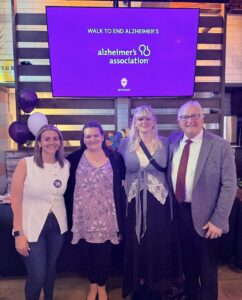In 2013, the U.S. Environmental Protection Agency warned that the frequency, severity and distribution of Harmful Algal Blooms (HABs) was increasing worldwide. (USEPA, Impacts of Climate Change on the Occurrence of Harmful Algal Blooms, Office of Water, EPA 820-S-13-001, May 2013). Subsequently, the Centers For Disease Control found that HABs appear to be rapidly increasing along our coastlines, as well as in our surface waters.
HABs result from an overabundance of nitrogen and phosphorus, and under certain combinations of temperature, sunlight and slow moving surface waters, such as small lakes, ponds and streams, HABs can rapidly occur. They typically bloom during the summer or when temperatures are warmer than usual, and climate change will only exacerbate the HAB problem.
Excessive amounts of nitrogen and phosphorus are being generated by residential and commercial wastewater from septic tanks, agricultural and residential fertilizers, stormwater runoff from roads and roofs, as well as other sources. These nitrogen and phosphorous discharges can adversely affect our groundwater, which is the sole source of our drinking water on Long Island.
In addition to harmful marine algae, sometimes referred to as “red tides” which can kill fish and marine animals, some HABs produce cyanobacteria. Some cyanobacteria blooms produce dangerous toxins called cyanotoxins. Exposure to cyanotoxins can result from drinking or swimming in contaminated water, or breathing in cyanotoxins that become airborne from water sources.
Cyanotoxins can affect the nervous system, liver and skin. Symptoms may include nausea, mouth blisters and ulcers, trouble breathing, fever, and slurred speech. There are many incidents of dogs dying from cyanotoxins after swimming in or drinking HAB contaminated waters. (“What Is Cyanobacteria?” by Joseph Bennington-Castro, medically reviewed by Robert Jamser, MD.)
The situation is acute in Suffolk County, where there is no large scale sewage treatment system in place to manage the massive amounts of nitrogen generated by residential wastewater. Roughly 75% of the County’s population of 1.5 million people rely on septic systems and cesspools. The number of septic systems in Suffolk County alone is roughly the same as in all of the State of New Jersey.
It has been determined that any amount of nitrogen in excess of 1 milligram per liter has a deleterious impact on coastal waters. In Suffolk County, the average amount of nitrogen is at the level of 4 milligrams per liter.
After years of debate, Suffolk County has initiated a “Reclaim Our Water Initiative”. County Executive Steven Bellone has said that “What we have been doing for decades is just managing the decline of water quality. Every water body is listed as impaired. We have dead rivers, closed beaches, harmful algal blooms.” (“Dead Rivers, Closed Beaches: A Water Crisis on Long Island”, by Lisa Foderaro, New York Times, May 8, 2017.)
The County determined that “Nitrogen pollution from cesspools and septic systems has been identified as the largest single cause of degraded water quality contributing to beach closures, restrictions on shellfishing, toxic algae blooms and massive fish kills.” Since thousands of parcels of land will never connect to a sewer system, “Reversing the degradation of water quality will depend on replacement of existing systems with new, individual Innovative and Alternative Onsite Wastewater Treatment Systems (I/A OWTS).” Recognizing that the cost of such systems may be burdensome to many households, the County is launching a grant and low-interest financing program to provide an incentive for installing I/A OWTS.
Old septic systems and the pace of new construction that relies on septic systems pose a grave threat to drinking water and coastal water bodies on the East End of Long Island.
The Towns of East Hampton and Southampton have forged ahead at an even faster pace than the County, not only establishing rebate programs and financial incentives to property owners to upgrade their systems, but also implementing mandatory requirements for new construction and equipment upgrades when systems are replaced.
The Town of East Hampton’s legislation “is intended to implement a shift to the installation and use of sanitary systems that reduce nitrogen levels at a significantly greater rate than conventional systems, and to support a rebate program to encourage the voluntary upgrade of sanitary systems.”
Commencing on January 1, 2018, “No person shall construct, alter, modify, repair or replace any system (including any septic tank or cesspool) located within the Town of East Hampton” unless it is a “Low-Nitrogen Sanitary System” as defined in the new law.
This new requirement applies to:
- construction of new buildings and structures where a sanitary system did not previously exist;
- any voluntary replacement of an existing sanitary system;
- any substantial expansion of existing structures;
- all large capacity cesspools mandated to upgrade pursuant to U.S. EPA regulations; and
- all nonresidential projects that require site plan review by the Town Planning Board.
The new law includes important enforcement provisions. “In addition to any other legal remedies available to him or her, the [Building] Inspector may, after consultation with the Town Attorney, file criminal informations and commence court proceedings on behalf of the town or the district to compel such compliance.”
Most important is the scope of persons who are made subject to the law:
“Any owner, occupant, builder, architect, contractor, agent or other person who commits, takes part in or assists in a violation of this chapter shall be liable upon conviction for a fine not to exceed $500 . . . or imprisonment for a period not to exceed 15 days. Each day on which such violation shall occur or be maintained shall constitute a separate additional offense.” (Emphasis added.)
Thus, in theory, a mere occupant of a property, or anyone who “assists” in a violation of the law, could be subjected to prosecution and sentencing for multiple violations for each and every day a violation is “maintained.”
Shortly after the adoption of the Town of East Hampton’s law, the Town of Southampton passed similar legislation, thus ensuring adoption of the new technology throughout the South Fork of Long Island. Southampton’s law went into effect on September 1, 2017. It requires installation of an I/A OWTS approved by the County Health Department:
- for all new residential construction,
- whenever major system upgrades are required by the County, and
- for any increase of 25% or more of floor area in locations designated as “High Priority Areas” by the Town of Southampton.
These measures at the County and local municipal levels are a tremendous step toward the protection of our drinking water. With time, they will also help reduce the incidence of dangerous HABs and restore the safety of our bays, ponds and other coastal water bodies.





